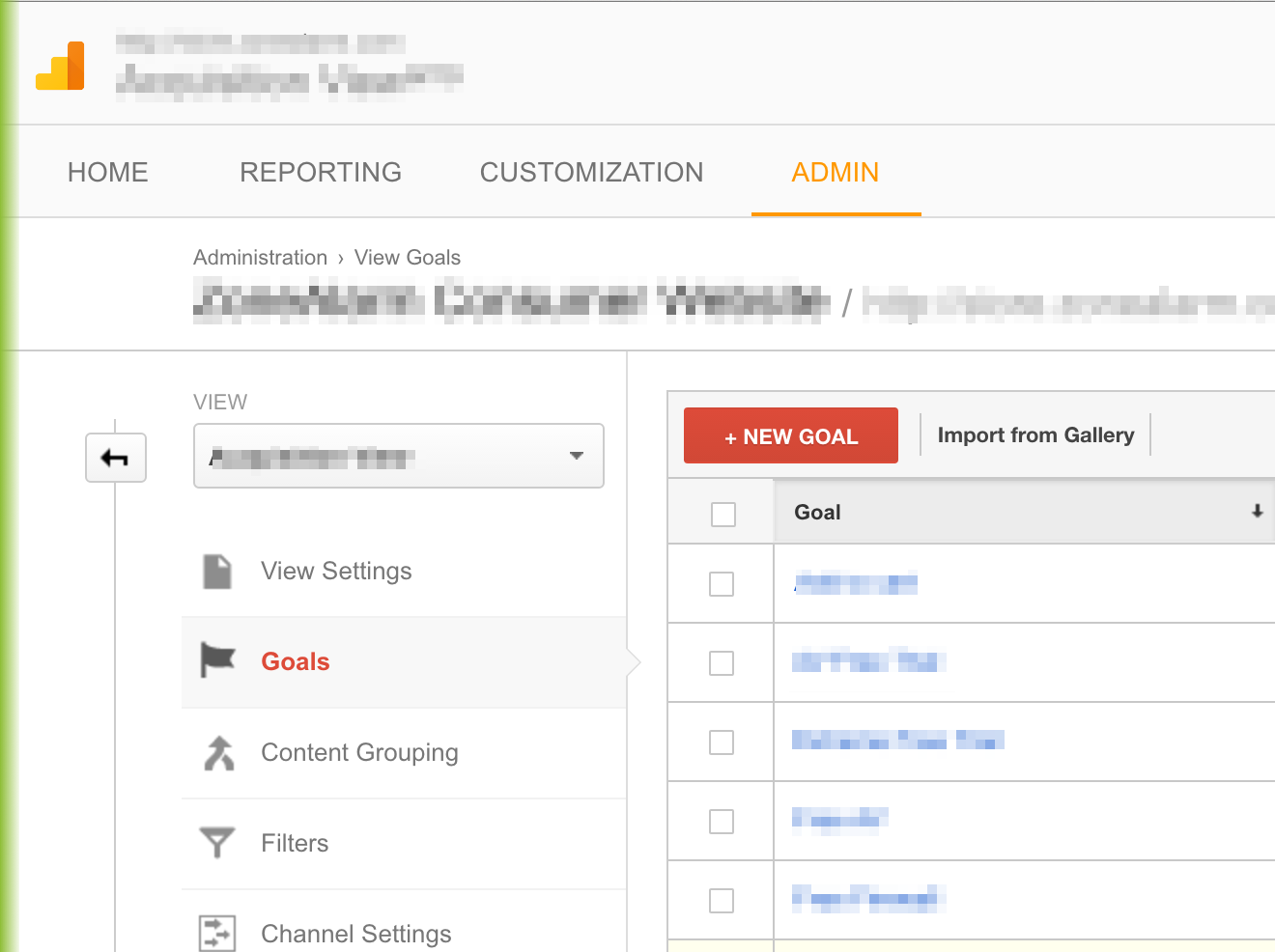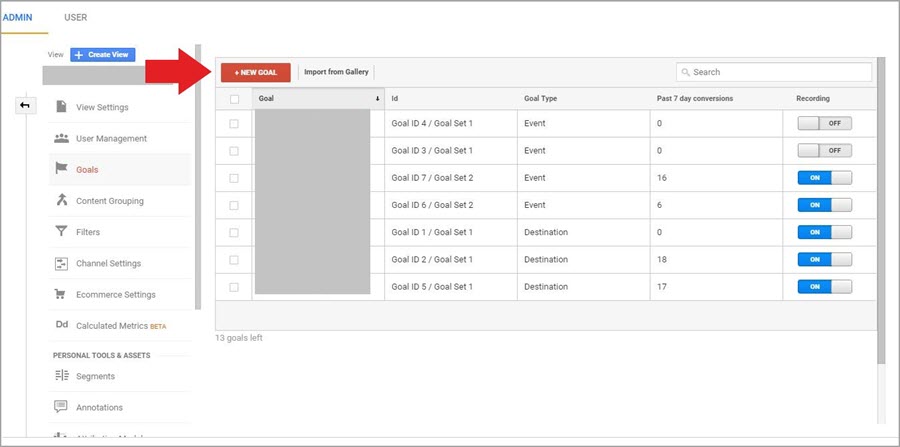What Data Is Google Analytics Goals Unable to Track: Critical Details
What Data Is Google Analytics Goals Unable to Track: Critical Details
Blog Article
Demystifying Google Analytics Limitations: Reveal What Data Goals Can not Track
In the world of electronic analytics, Google Analytics stands as a powerful tool that offers useful insights into site performance and individual habits. Among its abilities, there exist constraints that usually go undetected. Understanding what Google Analytics can not track is vital for a thorough understanding of data analysis and decision-making processes. From the details of user interaction with vibrant material to the intricacies of cross-device customer trips, these limitations clarified locations that might stay obscured from conventional analytics perspectives. By deciphering these restrictions, a more clear picture arises, permitting more enlightened approaches and refined insights into user involvement and conversions.

Individual Interaction With Dynamic Material
User interaction with dynamic content plays an important function in comprehending customer actions on internet sites and maximizing the overall customer experience. Dynamic content describes aspects on a page that can transform without the need for a complete web page reload. This consists of interactive elements such as pop-ups, sliders, types, and video clips that reply to user actions in real-time. By tracking customer interactions with vibrant content, website proprietors can get valuable insights right into customer involvement, preferences, and habits.
Google Analytics supplies various tools to track customer interactions with dynamic content, such as event tracking and online pageviews. Event monitoring allows you to keep track of details user actions, like clicking a switch or viewing a video, providing information on exactly how customers connect with dynamic components.
Cross-Device Individual Journeys
How can modern analytics devices track the facility paths customers take across several tools in their on the internet trips? Cross-device customer trips present a significant challenge for tracking and assessing customer behavior precisely. As customers interact with internet sites or applications making use of numerous tools such as tablet computers, mobile phones, and desktops, it becomes crucial to recognize how they relocate in between these platforms to enhance customer experience effectively.
Google Analytics faces restrictions in tracking cross-device user journeys due to privacy concerns and technical constraints - what data is google analytics goals unable to track. While it can supply understandings right into private gadgets' communications, tracking a smooth customer journey across numerous tools continues to be an obstacle. This limitation can cause insufficient information and fragmented individual understandings, making it difficult for services to produce a unified sight of the customer trip
To address this concern, services can utilize advanced analytics devices that supply cross-device monitoring capacities, enabling them to gain an extra all natural understanding of individual habits. By leveraging these devices, businesses can link the space in tracking cross-device user trips and maximize their electronic methods for a seamless user experience.
Offline Conversions and Acknowledgment
As companies navigate the obstacles of tracking cross-device individual trips, one more essential element to consider is the world of offline conversions and acknowledgment in the realm of information analytics. While Google Analytics supplies useful insights right into on the internet customer habits, it fails when it concerns tracking conversions that take place offline. This restriction poses a substantial challenge for businesses that have both online and offline sales networks.
Offline conversions, such as purchases made in physical stores or via telephone call facilities, are vital to understanding the full my response customer trip. Without the capacity to associate these offline conversions to specific on the internet communications, companies might battle to precisely gauge the impact of their electronic marketing efforts.
To resolve this void, organizations can explore alternate services such as incorporating CRM systems with online analytics tools or making use of unique discount codes that can be mapped back to on the internet projects. By linking the void in between online and offline data, services can gain a much more comprehensive understanding of their customers' behavior and improve their general marketing methods.
Person User Recognition
In the world of data analytics, the ability to precisely determine private customers across numerous on-line touchpoints is a critical challenge for companies seeking to personalize and maximize their marketing approaches. While Google Analytics gives valuable insights into individual habits and interactions, it falls short in allowing the identification of details individuals because of privacy concerns and technological limitations. Google Analytics uses unique identifiers such as cookies to track customer sessions and habits, however these do not relate to determining specific customers in a personal feeling.

Information From Secure Pages
In spite of the increasing frequency of protected pages on web sites, obtaining information from these encrypted resources presents a special difficulty for electronic analytics platforms like Google Analytics. Safeguard pages, shown by HTTPS in the URL, secure information exchanged in between the user's browser and the web site's web server to make sure personal privacy and safety and security. While this file encryption is crucial for securing delicate info, it additionally presents limitations for tracking user actions and gathering analytics data.
Google Analytics deals with barriers in gathering thorough information from safe web pages due to the file encryption protocols in position. Therefore, specific data factors such as referral sources, keyword searches, and also some customer communications may not be totally captured when users access an internet site with a protected connection. This restriction can influence the precision and completeness of the information evaluation, bring about voids in recognizing individual habits and preferences on safe web pages.
To browse this obstacle, electronic experts may need to explore alternate tracking methods or utilize other tools especially made to collect understandings from secure pages. By adapting techniques to fit these restrictions, services can still acquire beneficial analytics despite the restraints offered by encrypted links.
Verdict
In conclusion, Google Analytics has restrictions in tracking user communication with dynamic web content, cross-device individual trips, offline conversions, private customer recognition, and data from secure web pages. Despite its beneficial understandings, Google Analytics may not provide a total picture of customer engagement throughout various touchpoints.
Customer interaction with vibrant content plays a vital function in understanding individual behavior on web sites and optimizing click this the overall user experience. By tracking user communications with vibrant material, website proprietors can gain important understandings right into individual involvement, preferences, and actions.
Google Analytics uses special identifiers such as cookies to track customer sessions and behavior, however these do not equate to determining specific customers in a personal sense.
As an outcome, specific information factors such as recommendation resources, keyword searches, and also some customer interactions might not be fully captured when individuals access a website through a protected link.In conclusion, Google Analytics has restrictions in tracking individual communication with vibrant web content, cross-device individual trips, offline conversions, private customer recognition, and information from secure web pages.
Report this page